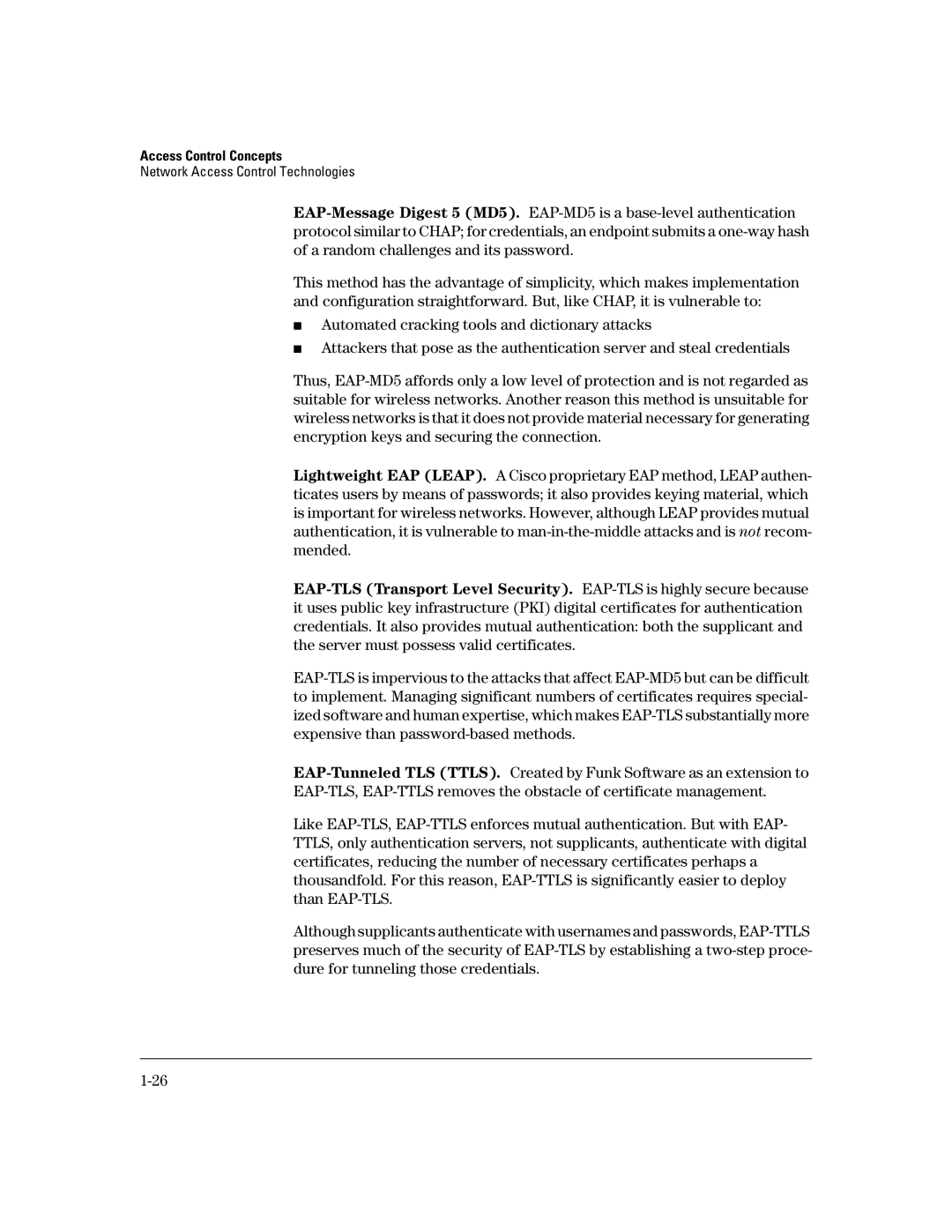Access Control Concepts
Network Access Control Technologies
This method has the advantage of simplicity, which makes implementation and configuration straightforward. But, like CHAP, it is vulnerable to:
■Automated cracking tools and dictionary attacks
■Attackers that pose as the authentication server and steal credentials
Thus,
Lightweight EAP (LEAP). A Cisco proprietary EAP method, LEAP authen- ticates users by means of passwords; it also provides keying material, which is important for wireless networks. However, although LEAP provides mutual authentication, it is vulnerable to
Like
Although supplicants authenticate with usernames and passwords,
